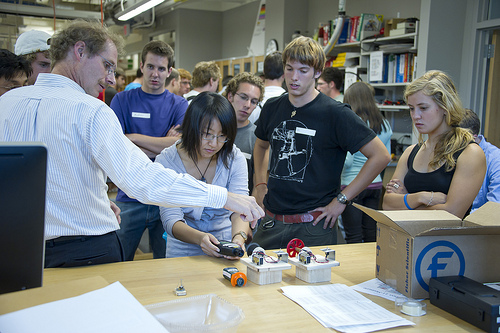Title: Stories in Leverone
General Information about Item:
Informant #1 Data:
- The informant is a Dartmouth ’21 female. She went on a first-year trip in September 2017; the trip was hiking (level 3).
Informant #2 Data:
Ethan Isaacson lives in Lexington, Massachusetts, and is currently a student at Dartmouth in the class of 2018. He was born on January 5th, 1996, and is studying chemistry and physics. He went on freshman trips when he was an incoming freshman, was a trip leader his sophomore year, and was on Hanover Croo, known as HCroo, this past fall, so has seen many different aspects of the trips program.
Leigh Steinberg was born and raised in Philadelphia, Pennsylvania, and was born on April 19, 1996. She is a student at Dartmouth in the class of 2018 and is a history major and plans on going into consulting after graduation. She was a trip leader before her sophomore year of college and was on Hanover Croo, known as HCroo, this past fall.
Contextual Data:
- Social Context
- All the trippees sitting in Leverone (indoor field on Dartmouth campus). H-Croo members stand up and tell stories to trippees as audience.
- Cultural Context
- The trippees are uncomfortable because it is their first day as students at Dartmouth, so to ease the trippees discomfort, H-Croo tells stories of what their lives were like when they were in the trippees positions. Some of these stories might be adaptations or exaggerations of what their lives were actually like when they were freshman, but the purpose of telling such tales is to make the trippees feel more comfortable
Item:
- Members of Hanover Croo (H-Croo) share stories from their own freshman falls at Dartmouth with the trippees. These stories are shared on the first night of trips while everyone is still on campus.
Transcript of Informant #1 Interview:
“The stories that H-Croo told were very reassuring. The reason they were telling those stories was to make us feel comfortable. So they would be like ‘I had the worst freshman fall ever. It was great, but also terrible, and here’s why.’ So it was nice because they served our moods. And everyone was in a good move because the stories were funny and we were all just getting to know people on trips.”
Informant #1’s Comments:
- It was really comforting to hear about the experiences of upperclassmen.
Collector #1’s Comments:
- Informant was able to give a detailed account of the experience that she had on trips.
Collector #1’s Name: Madison DeRose
Transcript of Informant #2 Interview:
So what used to happen was that people would read the Lorax to the trippees. And I think the point of that was like silly camping that goes with the whole trips spirit but also people thought it was stupid and condescending and a waste of everybody’s time. Um so it disappeared last year and this year was replaced with three brief-ish statements from HCroo to the trippees, the purpose of which was to convey what I wish I was told when I was in your shoes. Um and people used that opportunity to do a lot of different things.
It was also helpful in that with flair and the dress it makes them feel more comfortable by us being crazy, it was a nice moment of reflection where we could come back down to earth and relate to them on a more we were once in your shoes, we understand what you’re going through, and just bringing it down in a more real way rather than adding on to the goofy silly camp stuff.
Informant #2’s Comments:
- They were both fine with the switch from reading the Lorax at night to telling stories about how they felt when they were freshmen. They thought it made them more relatable and did not seem as ridiculous
Collector #2’s Comments:
- It is interesting they made this switch last year.
Collector #2’s Name: Henry Senkfor
Tags/Keywords:
- Verbal Folklore, Storytelling, H-Croo, trippees



